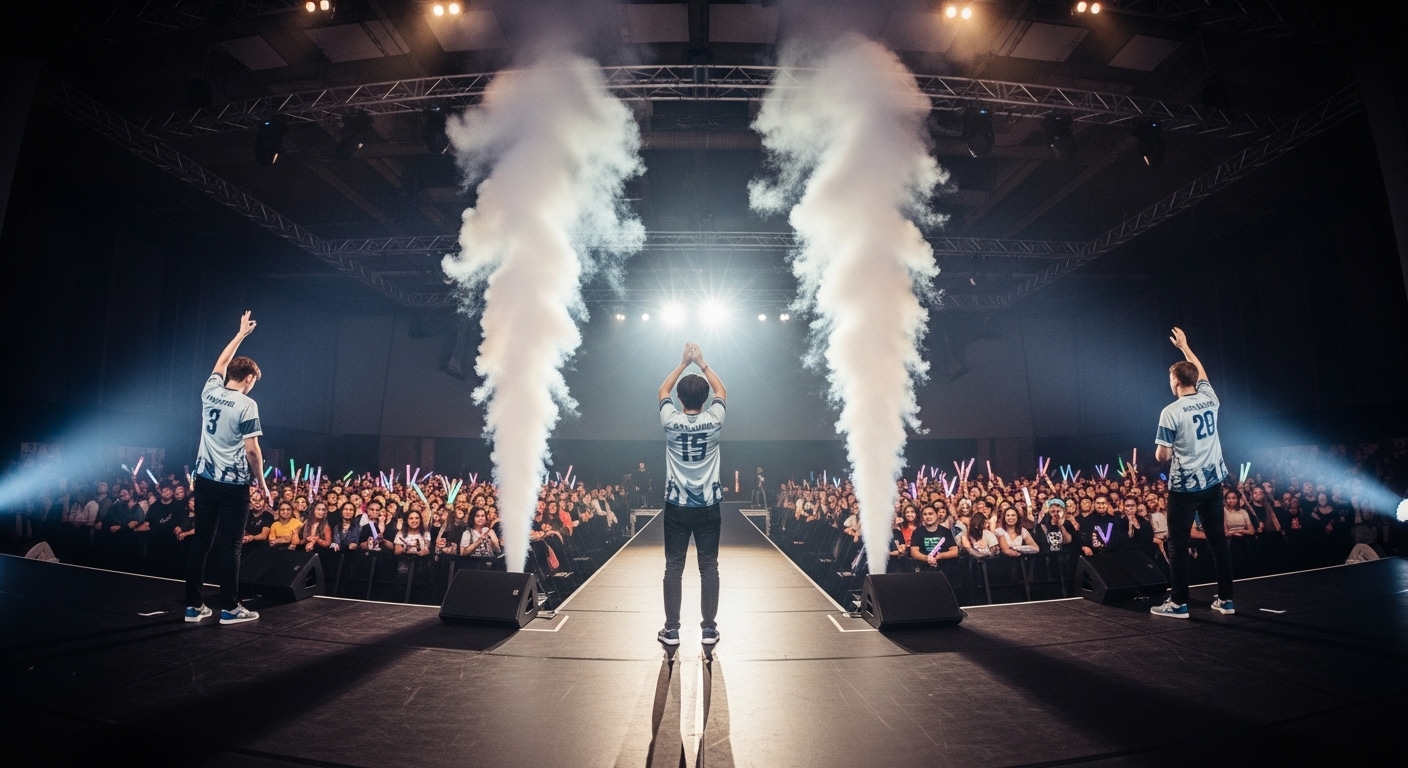In recent years, esports has transcended its origins as a niche hobby for gamers and transformed into a global entertainment powerhouse. What began as informal competitions among friends in basements and small local tournaments has exploded into a multi-billion-dollar industry with millions of fans, professional athletes, and worldwide tournaments. This blog post explores the fascinating journey of esports, the elements driving its meteoric rise, the impact on culture, and what the future holds for competitive gaming.
The Origins of Esports: Humble Beginnings
Competitive gaming has roots stretching back several decades. In the 1970s and 1980s, arcade games like Space Invaders and Pac-Man sparked the first sparks of competition. The earliest video game tournaments were simple affairs, often held in arcades or local gaming centers where players vied for bragging rights or small prizes.
One landmark event in esports history occurred in 1990 when Nintendo World Championships toured the United States, featuring players competing in a series of Nintendo games. While this event was significant, it was still an isolated phenomenon. The real transformation began with the rise of the internet and multiplayer games in the late 1990s and early 2000s.
The Rise of Multiplayer Games and Online Communities
The emergence of games like StarCraft, Counter-Strike, and Warcraft III revolutionized competitive gaming. These titles not only offered engaging gameplay but also supported multiplayer modes that allowed players to compete against each other in real time. The internet provided the perfect platform for these matches, enabling players to connect worldwide.
Online forums, chat rooms, and platforms like IRC channels created communities around these games, where players exchanged strategies, formed teams, and organized informal tournaments. These digital communities played a crucial role in cultivating a competitive spirit and fostering the early esports ecosystem.
The Birth of Professional Esports Leagues
By the mid-2000s, esports started to organize on a professional level. South Korea became a pioneering hub, particularly for StarCraft: Brood War. The Korean e-Sports Association (KeSPA) was established to govern professional gaming, and televised esports matches attracted millions of viewers. South Korea’s investment in esports infrastructure laid the groundwork for the global industry.
Around the same time, tournaments like the World Cyber Games and the Electronic Sports World Cup emerged, offering players from various countries the chance to compete internationally. Game developers themselves began to sponsor events, recognizing the potential to engage their player base and promote their titles.
The Explosion of Esports in the 2010s
The 2010s saw esports undergo exponential growth. Games such as League of Legends, Dota 2, and Overwatch became flagship titles in the competitive scene. The rise of streaming platforms like Twitch revolutionized how fans consumed esports content, making live broadcasts of tournaments accessible to millions worldwide.
Prize pools for major tournaments ballooned, with events like The International offering multi-million-dollar rewards. Teams became professional organizations with dedicated coaching staff, training facilities, and sponsorship deals, akin to traditional sports franchises.
Esports athletes gained celebrity status, and gaming personalities built massive followings, influencing gaming culture and beyond. Universities started offering esports scholarships, and the industry became a legitimate career path for many.
The Role of Technology and Streaming in Esports Growth
Technology has been a major driver behind esports’ success. High-speed internet, improved hardware, and sophisticated game design have enhanced the quality of competition and viewer experience. The ability to stream live gameplay with real-time commentary and interactive chats created a sense of community and engagement unmatched by traditional sports broadcasts.
Mobile esports also emerged as a significant segment, especially in regions like Southeast Asia, where mobile gaming is dominant. Games designed for smartphones brought competitive gaming to a broader demographic, further expanding esports’ reach.
The Business of Esports: Sponsorships, Media Rights, and Merchandising
As esports audiences swelled, businesses took notice. Sponsorship deals with major brands, from tech companies to beverage giants, poured into the industry. Media rights for broadcasting tournaments became lucrative assets, while merchandising and ticket sales added additional revenue streams.
Esports organizations operate much like sports franchises, with player contracts, marketing teams, and brand partnerships. This professionalization has elevated the industry’s legitimacy and sustainability.
The Social and Cultural Impact of Esports
Esports has significantly influenced global culture. It has shattered stereotypes about gaming, proving that video games can be a serious and respected pursuit. The community-driven nature of esports fosters inclusivity, connecting people across age, gender, and geography.
Additionally, esports has spurred innovation in game design, entertainment formats, and digital social interaction. The crossover between esports and mainstream entertainment—such as celebrity involvement, music performances at events, and collaborations with fashion brands—demonstrates its growing cultural clout.
Challenges and Controversies in Esports
Despite its success, esports faces challenges. Issues such as player burnout, mental health concerns, and inconsistent regulatory frameworks require attention. The industry also grapples with fairness in competition, including cheating and doping controversies.
Furthermore, the rapid commercialization of esports has raised questions about maintaining the integrity of grassroots communities and balancing profit with player welfare.
The Future of Esports: Emerging Trends and Opportunities
Looking ahead, esports shows no signs of slowing down. Virtual reality (VR) and augmented reality (AR) promise to create immersive competitive experiences. Artificial intelligence (AI) is being explored for training and match analysis, enhancing player performance.
The expansion of esports into new regions, including Latin America and Africa, is broadening the global footprint. Additionally, traditional sports organizations investing in esports indicates growing convergence between the two worlds.
Esports education and career development are becoming more structured, with academic programs and certifications aimed at nurturing talent both on and off the screen.
Conclusion: Esports as a Defining Force in Modern Entertainment
Esports has evolved from casual gameplay into a vibrant, multi-faceted industry that shapes how we engage with games and entertainment. Its impact spans culture, technology, business, and social dynamics, making it a defining force of the digital age.
As esports continues to innovate and expand, it holds the promise of bringing competitive gaming into new realms of possibility, uniting fans and players in unprecedented ways. Whether you’re a casual viewer, an aspiring player, or simply curious about this phenomenon, the world of esports offers an exciting glimpse into the future of competition and community.




